When the opportunity came up to have a play with some more vehicles, we immediately thought “hey, why not?” I took a look at a few cars last year for Ausdroid, on the premise of examinng the technology inside rather than the cars more broadly; let’s face it, I know technology, but I’m not much of a motoring expert.
The main things I wanted to look at with Ford’s 2017 range were some much needed updates to their in-car entertainment experience, namely their SYNC platform. We’ve taken a look at vehicles with the older SYNC 2 platform — including the Ranger Wildtrak — and the newer SYNC 3 platform which includes Android Auto, Apple Carplay and its own navigation, audio etc as well.
While we’ve looked at a lot of this tech already in the Ford Focus review, I was personally interested to see how all this technology would adapt to a larger frame, and with that in mind, I’ve been driving Ford’s 2017 Everest 4WD for the last two weeks or so, and now I can share with you my thoughts.
Ford Everest 4WD What is it?
In a nutshell, it’s a giant 4WD powered by a fairly giant engine, built on the frame of a Ford Ranger. In fact, there’s more similarities than differences, and overall, this is mostly a good thing. Fundamentally, the Everest is a 3.2-litre 5-cylinder Diesel-powered fire-breathing monster of an SUV, which literally dwarves smaller SUVs like the Subaru Forester, and even mid-range SUVs like the Holden Captiva.
Unlike some smaller SUVs that can seat 7 passengers, the Everest does this with quite a bit of comfort, with mod-cons like passenger air-conditioning vents (and controls), seats in the second row that are more than comfortable, and third row seats which my kids ask to sit in because they’re spacious and comfortable.
Like its Ranger stablemate, the Everest comes with 4WD capability, including low-range, as well as a range of terrain and stability controls to tackle everything from bitumen to dirt roads, muddy paddocks, rocky trails and sticky bogs. Unlike the Ranger, though, the Everest is a full-time AWD, with the option to switch to a more traditional 4WD setup when needed, including a locking rear differential, low range and disabling traction control.
For normal driving, though, the Everest sends most of its engine power to the rear wheels, throwing some to the front when needed, such as under heavy acceleration, around corners, or where traction is a bit lacking. It’s not quite the same experience as symmetric AWDs like Subarus, but it’s fairly reassuring nonetheless.
Ford Everest 4WD What’s it good at?
This is a big car, and that’s one of the major selling points. The Everest has incredible presence on the road, without being ridiculously oversized like a Hummer, giving you a great vantage over average traffic and further along the road. It’s rather comfortable to sit in, and climbing in and out (yes, you have to climb) is a rather welcome change from compacting myself into a smaller car, or squeezing into a single-cab ute at work.
Like the Ranger, it has a mountain of power available from the 3.2-l Duratorq engine, which produces a commanding roar when the pedal is buried into the floor. Of course, the performance doesn’t quite match the noise, and some of that can be attributed to the AWD system which diverts some of the power from the rear wheels to the front; we found the Ranger in 2WD to have a bit more get up and go off the line.
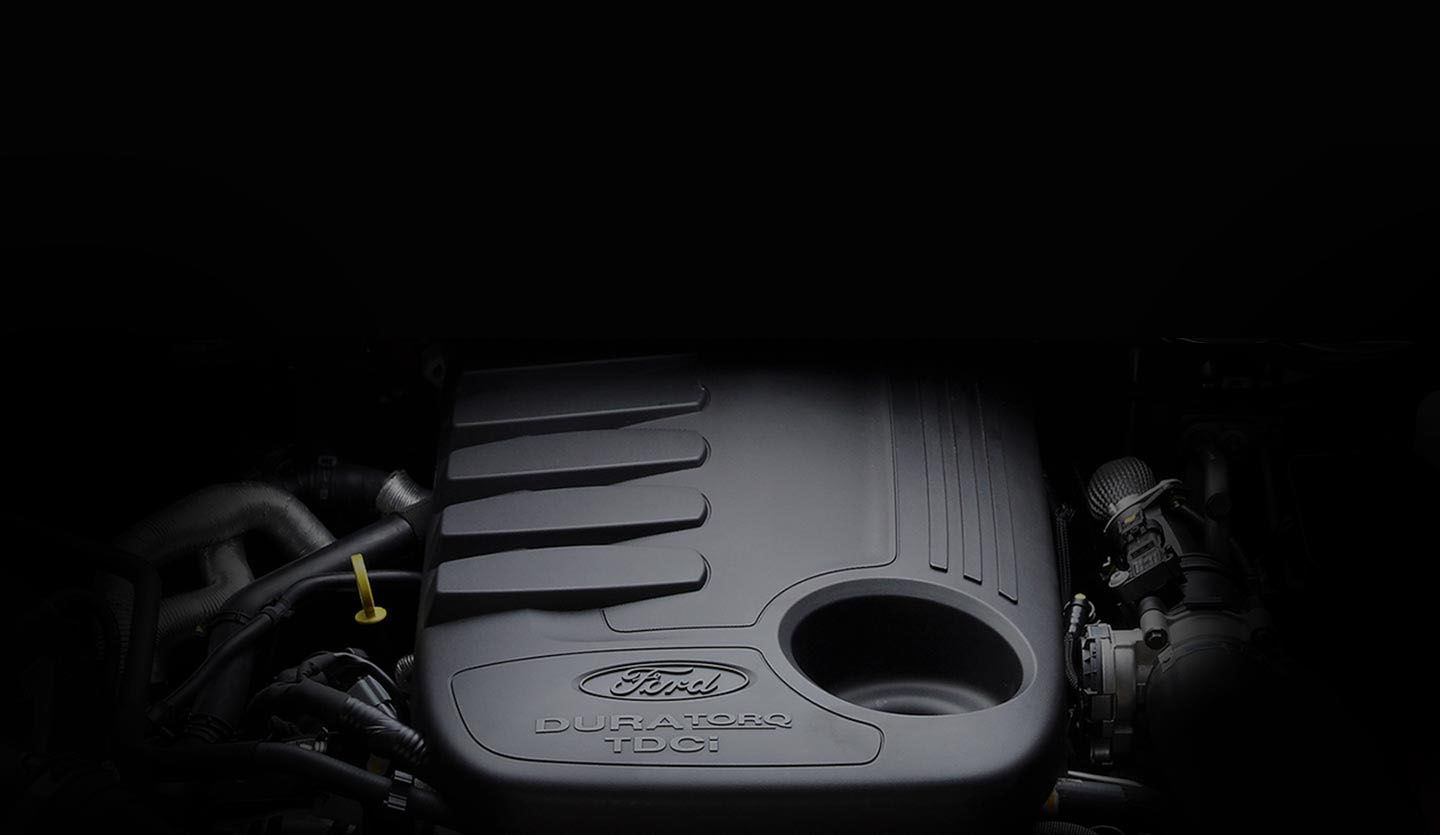
Driving around the suburbs isn’t really what the Everest is designed for, surely, and it kind of shows — we’ll talk about this more below. However, on the open road, the Everest is undoubtedly a comfortable experience, with next to no road noise (thanks to good insulation and active noise cancellation), and plenty of padding in the suspension and elsewhere to ensure that the ride is smooth and pleasant. Even off the beaten track — and we found a few rough places to try it out — the Everest is very comfortable, if not a bit bouncy, making the 4WD experience quite a bit more pleasant than you might remember from your childhood.
All this is great, but the in-car technology is what we’re interested in, and there’s plenty of it.
First, there’s Ford’s SYNC 3 platform. Yes, it includes Android Auto, and no, you’ll be surprised to know that I spent virtually no time using it whatsoever. Unlike other things in the Android space, Android Auto really hasn’t changed at all since it was introduced, and if you ask me, the experience really isn’t that useful or rewarding anymore.
The good news, though, is that with SYNC 3 (and other in-car platforms we’ve seen recently), you don’t need things like Android Auto anymore, because the experience delivered by Ford is better. Yes, it’s better.
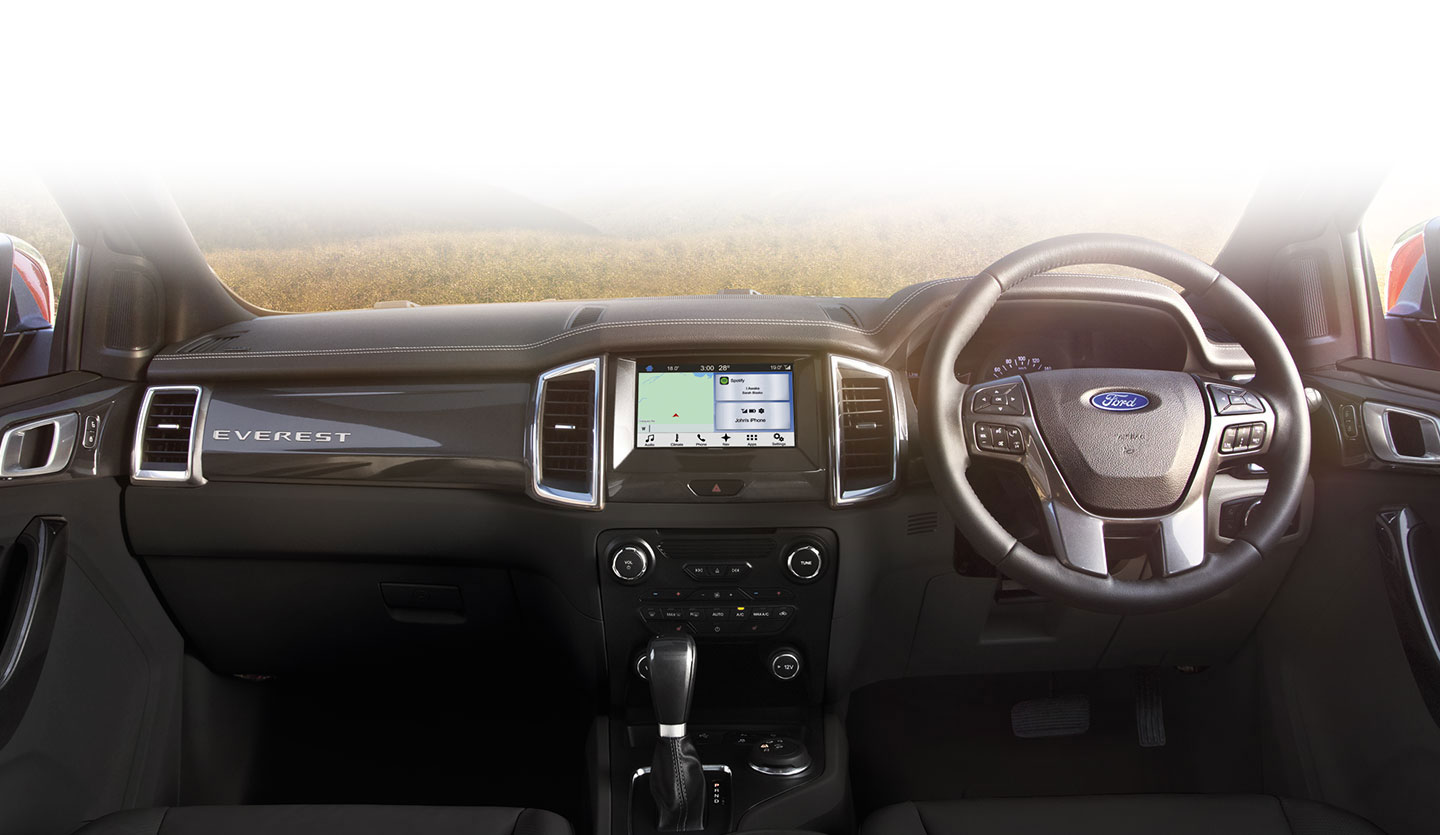
Out of the box, SYNC 3 includes navigation with up-to-date maps (more up to date than Google, in some instances), integration with your phone for calls and messages, AM/FM/DAB+ radio with better reception than any other car I’ve driven, the ability to play from USB, your iDevice, or even your Android over Bluetooth, and a climate control system which (almost) would make others weep.
I have DAB+ in my personal car — a Mazda 3 SP25 — but the reception isn’t great, and being low to the ground probably doesn’t help. The Everest, on the other hand, is taller than me which gives it rather better radio reception, allowing DAB+ to work well outside the metropolitan area where it’s supposed to work. The sound system is loud and punchy, meaning that you can enjoy our tunes as loud or as quiet as you like, with next to no road noise to drown them out.
The highlight for me is the SYNC 3 navigation; it’s so easy to use, looks good, gets live traffic from Suna which is usually pretty accurate and timely, and is easy to use when you’re parked, or for your passenger to use while you’re underway.
The best bit? SYNC 3 integrates with the instrument cluster, meaning you can see at a glance what’s playing on the radio, change stations, make or take phone calls, and see your next navigation direction all right in front of you, without having to look at the centre-mounted LCD touchscreen.
If I’m buying another car soon, something with this level of integration is a must. Oh .. my favourite new toy? The power boot lid. I can’t go back to having to open the boot by myself ever again.
The driver assist technology is much like we saw with the Ford Focus last year, including adaptive cruise control, lane-keeping cameras, and city emergency brake and collison warning. However, unlike the Ford Focus, in the larger car, these features just don’t work quite as well and we’ll look at some of these now.
Ford Everest 4WD What’s it not so good at?
Probably the most noticeable flaw comes from the shared heritage with the Ranger utility line; underneath, this is a vehicle built on a truck frame, just like the Ranger is. That’s not necessarily a bad thing. In fact, insofar as 4WDs go, it’s a very good thing, because it means they’re very strong, can take some really nasty off-road challenges, and survive where a monocoque SUV (like the Holden Captiva, for example) really just isn’t designed to go. The bad thing is that in many respects, the Everest feels like driving a ute:
- The steering wheel can be adjusted up and down, but it has no reach adjustment
- The ride can be very bouncy in places, thanks to the very tall suspension
- The weight of the car means that even at modest speeds, there’s a fair bit of roll, and eventually understeer
- It’s enormous — it’s a good thing, for some things, but not so much for others
I want to explore some of this with you, and add in a few other areas of concern too. The bouncy, rolly ride on less-than-ideal roads can be quite offputting. I regularly drive over Cattai Ridge to get between home and work, and on some corners, it felt like the Everest might just slip off the road, and this wasn’t at high speed. Around some corners in particular, the roll was such that — for a brief moment — I was worried whether we might in fact go over. When you’re off the bitumen, though, that bouncy ride is actually a blessing in disguise. If you hit a sudden bump, instead of adjusting your spinal column like some other larger vehicles, the Everest sort of glides over them.
The driver assist features — lane keeping, adaptive cruise, and forward collision warning — are great in smaller, more nimble vehicles, but in the Everest 4WD, they just don’t feel as polished as they should.
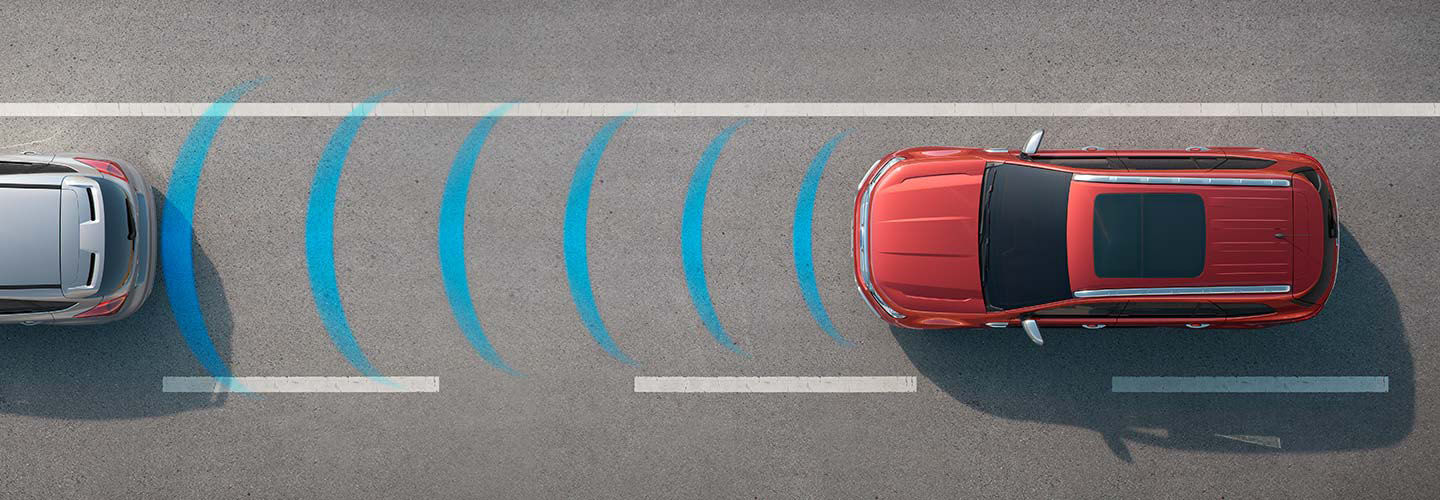
Let’s start with adaptive cruise. It’s a great feature that, in a nutshell, allows you to set a distance from the vehicle in front and a maximum speed and then your car will follow them, maintaining a safe distance and a safe speed, leaving you to steer and otherwise relax a little. However, in the Everest, I found that relaxing was rather dangerous. I don’t know precisely why, but the ACC in this car just didn’t feel quite … settled. On many occasions, the Everest seemingly lost “sight” of the vehicle ahead of it, and decided to get up and go … had I not been paying attention, we’d have crumpled someone’s Toyota Yaris. On other occasions, especially when approaching slowing traffic, the Everest braked very late .. and in some cases not at all .. leading to some very hair raising experiences. Needless to say, the adaptive cruise is very well suited to freeway driving, provided you keep an eye on what you’re doing. On anything less than a freeway (even if its an 80kph road with few interruptions) it’s just a bit dangerous.
Forward collision alert is a good thing, except that it seemed a bit nervous and over excited. It triggered far more often than I would’ve liked, with its flashing red heads-up display and audible alert, leading to quite a bit of annoyance. Eventually, I found myself switching it off because it activated far too much. A good idea, but perhaps overly sensitive.
Lane keeping is another welcome feature, but it really does require a good quality road with recently painted linework. As soon as the lines get a bit faded, or on older roads where there’s no kerb-side line marking, the lane keeping doesn’t work so well, and will often leave you in the path of oncoming traffic for too long before realising you’ve crossed the line. In a smaller vehicle, it feels more responsive and accurate. In the Everest, it just doesn’t fit very well, and even on the freeway it just wasn’t comfortable to really have switched on.
Last, but not least, is Android Auto. Yes, this is going in the “not very good” category. In the Everest 4WD, most things work just fine like Google Maps, your music, and voice control, but the phone integration was just terrible. It virtually caused Android Auto to stop working whenever phone calls came in or were made, to the point that I found myself very quickly turning Android Auto off and using SYNC 3 instead. I know, the Android blog calling Android Auto a bit crap seems a bit weird … but honestly, after the initial hype, I’m quite happy without Android Auto and the Everest just helped me confirm that.
Ford Everest 4WD Would I buy one?
The model we reviewed – the Ford Everest 4WD Trend – retails for about $58,990, making it a rather expensive SUV. If you’re on a budget, and looking for a diesel SUV that can seat 7, there are plenty of cheaper options around, though you do lose a bit in the convenience. For example, our family SUV with seven seats is a Holden Captiva, and while it has Android Auto, there are plenty of things it doesn’t have — it isn’t AWD or 4WD, it doesn’t have adaptive cruise, forward collision alert or lane keeping, nor does it have a power tailgate or air conditioning in the back. It is, however, a shade over half the price at around $33,000.
If price is your only barrier, then you might want to consider what Ford have just announced this last week; a new entry-level Ford Everest Ambiente RWD 5-seat model which starts from $47,990, and a 7-seat model for just $1,000 more.
This brings us to an interesting point; many (if not most) people who buy a Ford Everest are likely buying it as a larger SUV with towing capacity, rather than as a full-on 4WD wagon with wading, ground clearance, etc. This observation holds true acrossa range of brands’ cars. People aren’t necessarily wanting the 4WD/AWD variants of these larger vehicles, opting for the cheaper 2WD models which are just as good for use around town and even on dirt roads, which use less fuel, and are a bit easier to drive because they don’t weigh as much.
If that’s the case, and you’re quite fond of the Ford Everest line (which, frankly, we can understand you being) then there’s little reason to spend the extra $10,000 on the Trend 4WD model we reviewed, when you can save the money and have the RWD variant (in Ambiente trim) instead. Granted, it doesn’t have quite as many bells and whistles, but the ones you lose — ACC, forward collision, and lane keeping — really aren’t worth the $10,000 you pay for them.
I have thoroughly enjoyed driving the Everest, but there’s reasons why I mightn’t recommend it. Though it’s almost $60,000 worth of car, there’s plenty of cheap plastic throughout, and while the SYNC 3 system (including the digital climate control) is really good, the manual buttons (instead of nice friendly dials) for climate control are a real disappointment. The full-time AWD feels unnecessary, and I think I’d rather have the more traditional 2H / 4H / 4L setup to deliver a bit more power to the rear wheels.
Other options for this segment include the Holden Trailblazer (built on the Colorado frame) and the Isuzu MU-X (built on the D-MAX frame), both of which are about the same price and offer (approximately) the same inclusions.
Stay tuned for our write-up of the 2017 Ford Ranger XLT, coming soon.

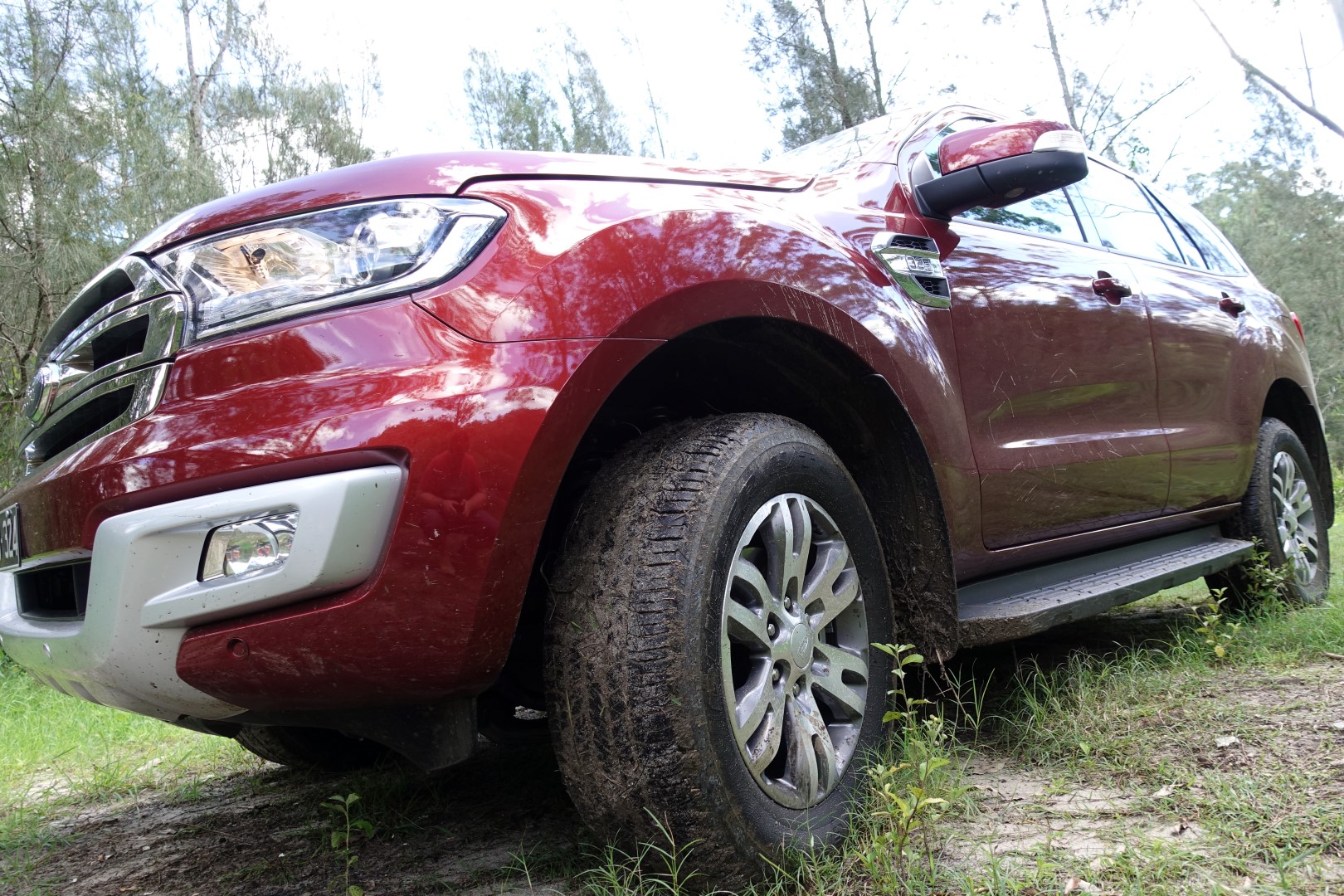
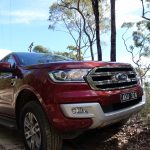
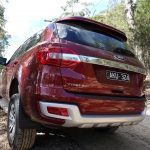
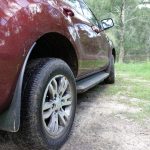

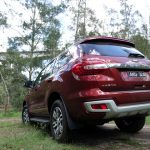




Ausdroid has lost its way if its starting to reviewing 4wd other than its tech. Last thing I would do is buy a car based on reviews here…. sorry guys! But I’d go to the professional car sites for that.
Now if we are talking about reviews on all things droid, then I’ll pay attention:-)
We review all manner of tech that our audience wants us to… Sometimes we review the tech we want to. I’m not trying to sell you a car. Just to tell people about the cool technology in them these days.
Fair enough! I just see Ausdroid as anything on a droid or attaches to a droid. This went that leap further 🙂 I still read the article and found it informative though 🙂
I must say though, the main thing I love about this site is the honest opinions. I read a main usa droid site and I’ve noticed that seems to be based on the amount of freebies they get on how the article ends up.
It may be just the cynic in me, just the feeling I’ve been getting lately with them 🙁
Totally agree with you, hadn’t thought of the relevance previously. Prior to reading your comment it was just a pointless and rather uninformative review. Now reading your comment it makes sense.
Why bother in the first place. It seems even less relevant considering the Synch 3 has been reviewed previously, although I couldn’t bring myself to read it.
Sync 3 in the Focus is (for all intents and purposes) the same as Sync 3 in the Everest and the Ranger, that much is true. But I come back to the comment I made below … we can kind of review whatever we like. Mostly, we review phones. Sometimes, we review laptops, drones and other related tech. Very rarely, we review cars and other things that are fun to us personally. Of course no one’s going to buy a car based purely on what Ausdroid says. Anyone doing that would be a bit of a twit. That said, though,… Read more »
I’m not sure it’s fair comparing this car frequently throughout this review to a Captiva.
Sure there both 7 seats but that’s where it ends. I must stress having driven this model I don’t like it that much, however this is a 4WD wagon not an SUV like the Captiva.
It has good ground and water wading clearance, large GVM and toe capacity not to mention low range transfer case and gearing.
You probably should have stuck to reviewing the tech not the vehicle.
Thanks for your thoughts Craig. I guess I’m fortunate having driven a good number of cars, trucks, utes and more, as well as owning a Captiva, so I think I’m fairly well placed to comment. The reality is, 4WD wagon or not, this is going to be compared to SUVs, because for all intents and purposes, and for 95% of the time it will be used, that’s what it will be. Of course it has advantages over an SUV — the huge towing capacity, ground and wading clearance, etc — but this was a review aimed at the average user,… Read more »
No worries mate.
I disagree but that makes life interesting.
Plus the price point IMO is fairly standard now. Particularly with Hilux and Ranger occupying the top of the charts priced competitively with this.
$60k is probably the sweet spot for most.
Thanks for the review non the less.
Thinking of this for the wife and she has no intention of bringing this to the any unpaved roads